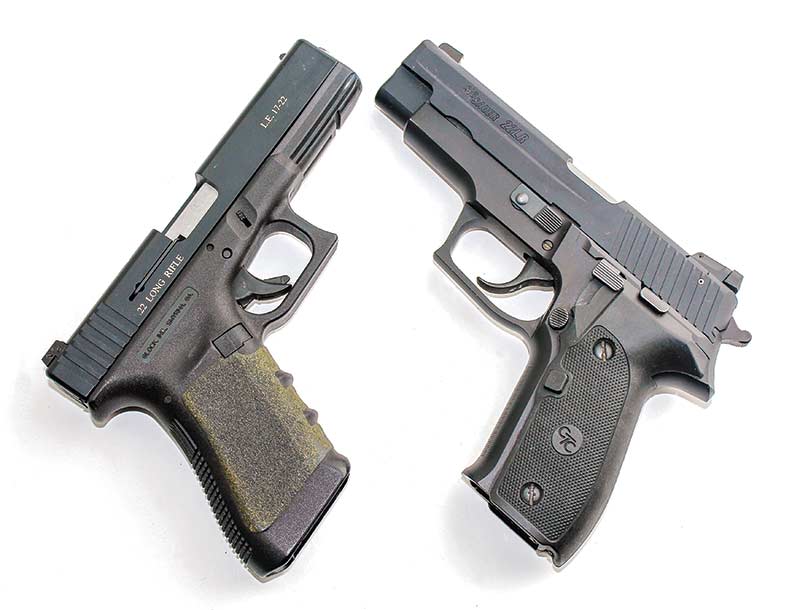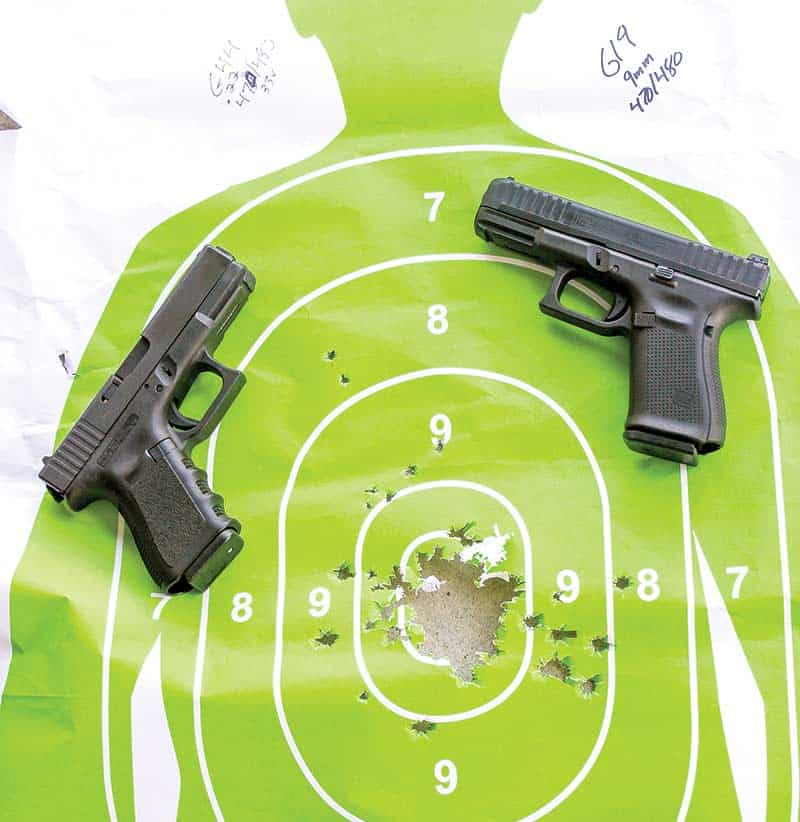Understudy Guns .22
If There Was Ever A Time For .22s …
“Understudy gun” was a term first heard in these pages and is now more relevant than ever.
Way back in the day, my predecessor in this column, Jan Stevenson, was I believe the first to use the term “understudy gun” to describe a .22 caliber version of a larger caliber handgun. He cited the Colt Trooper .22 he used to practice for centerfire revolver shooting, Colt’s .22/45 conversion unit for their big autos and Smith & Wesson’s little .22 Kit Gun as an understudy for what was then the most popular concealed carry gun in the country, the J-Frame .38 Special snubby.
Writing this now, in the midst of the worst “ammo drought” of my long lifetime, I appreciate Jan’s concept more than ever. In the last ammo drought circa 2013 I saw 500-round bricks of .22 ammo selling for a hundred bucks. I’m seeing this some places now. What I didn’t see then, and seeing now, is 9mm practice hardball tagged at a thousand dollars for a thousand rounds — and people desperate enough to buy it at this price.
Yes, .22 ammo costs more these days than it used to from most sellers, but it’s still cheaper than the 9mm and .45. I am blowing the cobwebs off my .22 conversion units and spending more time with understudy guns.
One Example
I’ve been enjoying my GLOCK 44, a 10-shot .22 LR in the same format as the 9mm G19, .357 SIG G32 and .40 S&W G23. It’s much lighter, of course, and has almost no recoil but otherwise it’s a pretty good facsimile. Mine hasn’t been modified in any way, including the sights, so for a comparison test I pulled a stock G19, original right down to the white “ball in basket” plastic sights except for a Striker Control Device from Tau Development Group (taudevgroup.myshopify.com). The SCD replaces a GLOCK’s backplate and prevents the trigger from being pulled while the thumb is applying pressure to it, a safety net if you have to hurriedly holster.
I wanted the sights to be the same, since most of my other GLOCKs have aftermarket sights. Both pistols have stock 5.5-lb. trigger pulls. Each, along with their magazines, fit perfectly in the holster, mag pouches and belt from Precision Holsters.
I took them to the range with a box each of Aguila .22 Long Rifle Super Extra 40-grain and Atlanta Arms and Ammo 9mm 115-grain FMJ Match. The course of fire was NRA Police Service Pistol, which you can complete with a 50-round box and have two cartridges left over. The B27 target in competition scoring mode gives a value of 10 points per shot. It starts at 3 yards with 6 shots dominant-hand-only in eight seconds, followed by reload and six 2-handed from 7 yards in 20 seconds. This is repeated at 15 yards, followed by six each kneeling, standing “weak side,” and standing “strong side” in 90 seconds total. All times start with hand clear of holstered weapon and include reloading time.
I shot the .22 first, keeping them all in the tie-breaking center 10-X ring until I got to the 15-yard line, where I got some 10s and a 9. At 25 yards I started drifting north-by-northwest as far as the 8-ring and ended up with a 470 out of 480 possible. For about the first three magazines after shooting the .22, the 9mm felt like a .45. At the 25-yard line with the left hand stage, I pulled all six south-by-southeast but the takeaway is this — I shot the same 470 out of 480 with the 9mm as with the .22, learned similar lessons, and did it cheaper with the rimfire.
The Understudy
What the .22 lacks, of course, is recoil, and it can spoil us and let us get sloppy as to hold and grasp. In GLOCK matches on the same field of fire as the larger caliber service pistols — two shots on each paper target. The only difference is to compensate for the .22’s feeble power level, a hit on a steel target scores the same as knocking it over. I looked at the scoresheets from a couple of these matches and didn’t see much difference between the G44 in Rimfire and the G17 and G19 pistols in the Master Stock division. With at least 81 shots fired (you get pickup shots if you miss the steel), Brad Balsky scored 31.55 seconds time with the .22 and 35.73 with the 9mm; Tony Boone shot 43.93 seconds with the .11 and 44.72 with the 9mm; and Gorka Ibanez with 42.50 in .22 was actually faster in Master Stock with the 9mm at 39.14 seconds.
For trigger time, the .22 shines at draw-to-the-shot practice, where recoil doesn’t much affect things. And, for breaking in those millions of new gun owners we’ve been embracing since 2020, the light recoil and mild report of the .22 make an obviously good choice as a “starter gun.”






